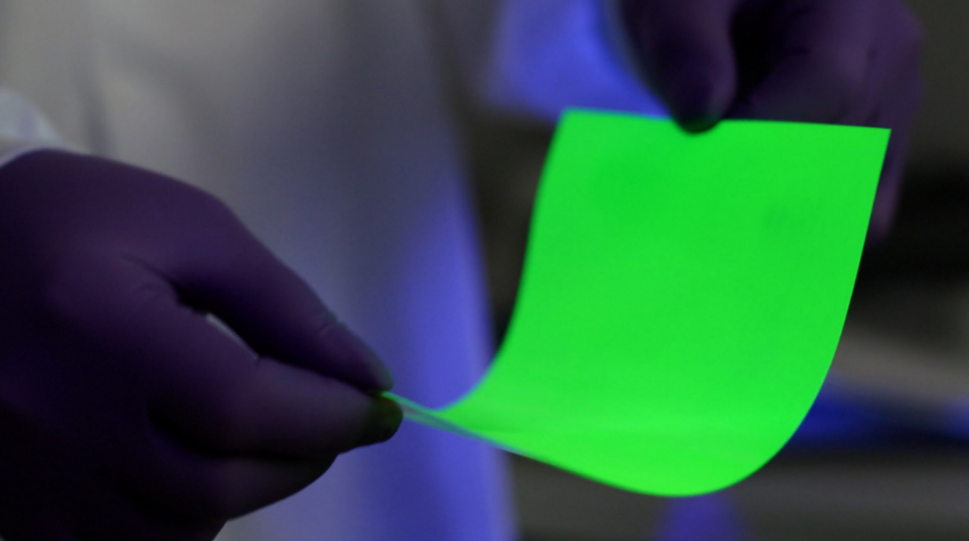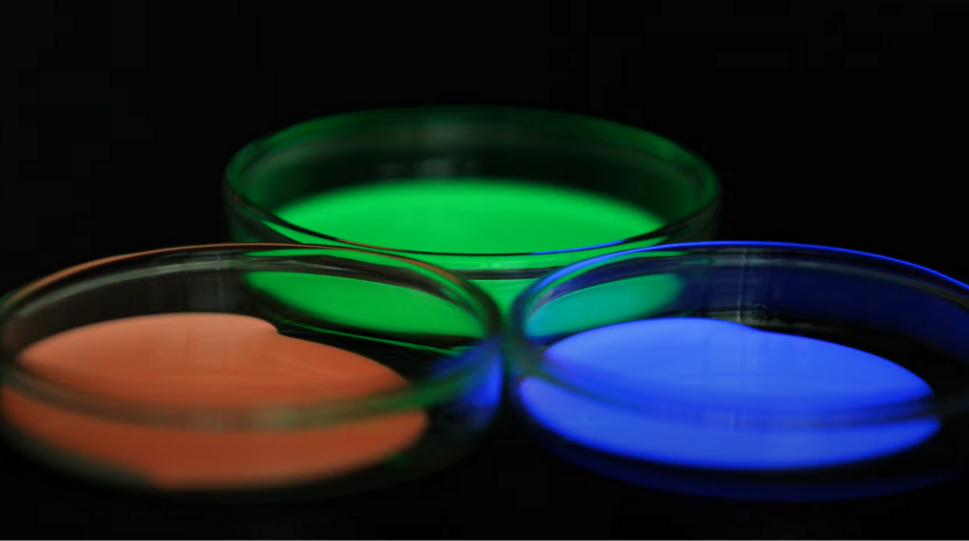BrightComSol
BrightComSol is developing the next generation of scintillators. The light-sensitive materials increase image resolution in radiology, improve imaging speed and reduce radiation dose.
aws Seedfinancing | 2023 | Deep Tech | Wien
Not everyone is familiar with the term “scintillator” – and that is nothing to be ashamed of. Put simply, scintillators are materials that turn ionising radiation into visible light. They start to glow. Scintillators play a crucial role in radiology, particularly in digital X-ray imaging and computed tomography (CT). And these scintillators largely determine the image quality, imaging speed and radiation dose required for an imaging examination.
The two founders, Behzad Shirmardi and Erik Reimhult, have developed a technique to mass-produce a special class of nanocrystals, known as perovskite quantum dots (PQDs), at low cost. The quantum dots convert light invisible to the human eye into visible colours. PQDs are marketed by BrightComSol in foil form as scintillators and used in X-ray technology. The advantage of these special nanocrystals is that digital X-ray detectors equipped with them deliver 100% sharper images ten times faster and with a lower radiation dose than conventional scintillators. Up to now, PQDs could not be used for industrial purposes, because their unique properties could not be replicated in mass production.
Several variants
BrightComSol has developed three product variants to date. The basic design is a resin formulation (BrightSplash™) densely loaded with PQDs, which can be used by original equipment manufacturers (OEMs) to produce scintillators in any format. Based on this version, an ultrafast thin-film scintillator (BrightLeaf™) was brought to the market in 2021. A third patented ultrahigh-resolution scintillator (BrightPixel™) was launched in 2023 to develop a new generation of X-ray detectors in collaboration with the medical device industry. These new scintillators will make it easier to detect defects in huge reusable rocket parts, find tiny flaws in mass-produced batteries (reducing the risk of fire!) and make medical X-ray diagnosis more detailed, faster and less harmful.
Next generation
BrightComSol was founded in 2020 as a nanotechnology spinoff of the University of Natural Resources and Life Sciences (BOKU) in Vienna. Behzad Shirmardi and Erik Reimhult each have more than a decade of experience in colloid science and nanomaterial synthesis. Following initial market success, the company has attracted an angel investor and is seeking to raise a further seed round of funding from venture capital or strategic investors in 2024. The research pipeline includes a product development project for live dosimetry in medical X-ray therapy based on novel material formulations.
“Our mission is to save lives through technology. We develop materials that improve and extend medical imaging. To realise our long-term vision, we need the support of the deep-tech programmes at aws. Deep-tech startups like ours are too risky for most investors and have a long R&D path to market.”
Behzad Shirmardi (CEO) and Erik Reimhult (CSO)
Tip: Once you have developed your minimum viable product (MVP), try to sell it to as many people as possible or popularise it in some other way. Your product needs to be tested by the customers, otherwise you will never find the right market or develop the right product.


